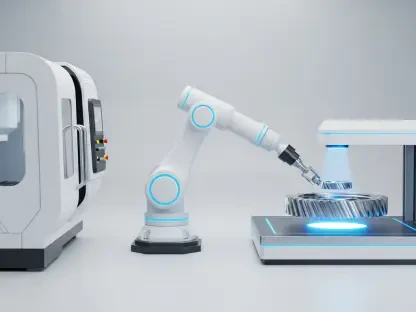In the rapidly evolving landscape of manufacturing, the integration of Artificial Intelligence (AI) and the Internet of Things (IoT) is revolutionizing predictive maintenance practices. Predictive maintenance harnesses data to detect irregular patterns and anticipate equipment failures before they occur, contrasting sharply with traditional methods that typically address problems post-failure or through routine checks regardless of necessity. This transformation is crucial in a sector where downtime can lead to significant financial losses and operational disruptions. AI enhances the predictive maintenance system’s intelligence and efficiency by processing vast amounts of data, identifying patterns, and predicting potential issues. Through machine learning algorithms, AI analyzes historical data to foresee future malfunctions, offering a proactive approach to equipment maintenance. IoT plays a significant role by employing sensors that gather real-time data on machine health, enabling continuous monitoring and prompt intervention when needed. The synergy between AI and IoT creates smarter, more efficient manufacturing environments capable of optimizing production and ensuring safety.
The Role of AI in Predictive Maintenance
AI’s ability to process and analyze large volumes of data from manufacturing equipment is at the core of its transformative role in predictive maintenance. Through sophisticated machine learning algorithms, AI can identify patterns and anomalies in the data, which helps predict potential issues before they become critical. For example, Siemens has developed AI-driven solutions that model machine behavior to forecast malfunctions, allowing businesses to target specific areas needing maintenance. This proactive identification of problems enables manufacturers to schedule maintenance during optimal times, minimizing disruptions and extending machine lifespan. Additionally, generative AI promotes seamless communication between users and maintenance experts, providing clear guidance on the next steps after an issue is detected.
The advantages of incorporating AI into predictive maintenance are multifaceted. By predicting equipment failures ahead of time, companies can significantly reduce unplanned downtime, enhancing overall productivity. Less downtime means that manufacturing operations run more smoothly, leading to increased throughput and higher customer satisfaction. Moreover, addressing issues early prevents further damage to machinery, which can result in considerable cost savings by reducing repair expenses and extending the equipment’s longevity. AI’s precision in predicting failures also contributes to better workplace safety, as timely maintenance reduces the likelihood of accidents caused by equipment malfunction. The improved reliability of machinery also ensures a more consistent production output, facilitating better delivery schedules and product quality.
Enhancing Predictive Maintenance Through IoT
IoT significantly amplifies the capabilities of predictive maintenance by providing real-time monitoring of equipment health through sensors placed on machinery. These sensors continuously collect data on various parameters such as temperature, vibration, and pressure, enabling a detailed and ongoing assessment of machine conditions. In smart factories, the integration of IoT and AI allows for the meticulous observation of machinery, adjusting operations as necessary to maintain optimal performance. This continuous monitoring helps identify potential issues quickly, permitting immediate intervention before minor problems can develop into major failures. Furthermore, real-time data collection ensures that maintenance activities are based on the actual condition of the equipment rather than predetermined schedules, leading to more efficient use of maintenance resources.
Numerous real-life examples illustrate the efficacy of AI and IoT-driven predictive maintenance in manufacturing. Holcim, a leading building materials company, has implemented AI solutions across over 100 sites to predict and prevent equipment problems. This implementation has yielded significant improvements in efficiency and reliability. Similarly, Priestley’s Gourmet Delights in Australia invested in an advanced factory equipped with AI capabilities, which resulted in a substantial increase in production capacity and a decrease in manual labor. Qantas, the Australian airline, leverages AI to optimize fuel usage, plan flight routes, and handle unexpected situations more effectively. These examples underscore how the integration of AI and IoT can lead to remarkable enhancements in operational reliability, cost reduction, and overall productivity.
Challenges and Future Prospects
In the rapidly changing manufacturing sector, the integration of Artificial Intelligence (AI) and the Internet of Things (IoT) is transforming predictive maintenance. This modern approach uses data to identify irregular patterns and predict equipment failures before they happen, unlike traditional methods that address issues after they occur or through periodic checks that may not be necessary. This shift is vital in an industry where downtime can cause major financial losses and disrupt operations. AI boosts the intelligence and efficiency of predictive maintenance systems by processing large volumes of data to identify patterns and predict potential problems. Using machine learning algorithms, AI analyzes historical data to foresee future malfunctions, allowing for a proactive maintenance strategy. IoT significantly contributes by using sensors to collect real-time data on machine health, facilitating continuous monitoring and quick action when needed. The collaboration between AI and IoT leads to smarter, more efficient manufacturing environments that optimize production and ensure safety.









